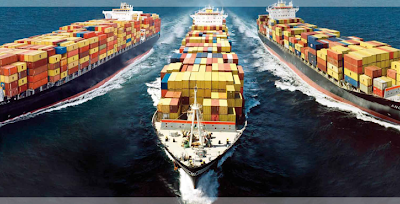Our Research
FreightLab research focuses on working with companies to develop and implement real-world solutions to these challenges.
Current Projects
Freight contract performance & portfolio strategies
In the U.S. truckload (TL) industry, shippers and motor carriers face major challenges as a result of uncertainties in the amount and timing of demand for capacity, availability of trucks at the time and locations needed, and external market conditions.
Modeling Effects of Natural Disasters on The US Truckload Market
We analyze shipment data for assessing the impact of natural disasters on freight movement. Our focus is on North-Atlantic hurricanes that make landfall in the contiguous USA. Quantifying the impact of natural disasters on the truckload industry can help shippers know what costs to expect, what routes to avoid, how to procure and position relief goods.
The Driver Initiative
The Driver Initiative looks to uncover new insights and identify specific opportunities to improve the effectiveness, efficiency, and quality of life of American over-the-road truck drivers through an analysis of individual driver actions and behavior using ELD and other related data
Previous Projects
Forecasting Long Haul Truckload Spot Market Rates
The project aims at predicting long haul truckload spot market rates in continental USA for the near future. Accurate forecasting of transportation costs is a key step in logistical planning. It helps buyers and sellers
of transportation services make better decisions at all stages of a supply chain.
Freight Rate Impacts & Influences
This continuing project examines how truckload transportation rates are impacted by different policies, procedures, and network characteristics. Various econometric techniques were employed to quantify these impacts. Additionally, the projects uncovered actions that both shippers and carriers can take to reduce overall transportation cost.
Future Freight Flows
The future rarely moves in predictable, incremental ways. Often seemingly small changes in technology, demographics, regulations, economics, or a myriad of other factors have dramatic and unintended impacts on how companies source, manufacture, distribute and operate in general. These non-linear impacts are very difficult to predict using traditional forecasting methods and techniques since they, by definition, do not follow any historical patterns.
Global Ocean Transportation Reliability Initiative
The design, procurement, and management of a global ocean transportation (GOT) network is a challenging task. By definition, the network spans multiple continents, involves a variety of business units, and can impact and influence operations from procurement to final assembly. Additionally, the ocean carrier industry has particular pressures in terms of market structure, levels of competitiveness, and transparency (or lack thereof) of pricing and service levels. While the ocean carrier market appears to be global on the surface, in reality most of its activities are directed at supporting specific trade lanes.
Freight Network Optimization (FNOT)
This project explored the use of a variety of different transportation relationships between shippers and carriers to improve overall performance. Specifically, working with several different retailers and manufacturers, developed an approach for determining the optimal assignment of for-hire and private fleet assets across a freight transportation network while considering the uncertainty of demand for truckloads.
Optimization Based Transportation Procurement
This research initiative addresses how shippers (buyers) should procure transportation services from truckload (TL) motor carriers (suppliers). TL carriers operate over irregular routes moving directly from origin to destination without any intermediate stops. A significant portion of a TL carrier’s costs is due to the repositioning of empty vehicles (deadheading) from the destination of one load to the origin of the follow-on load.









